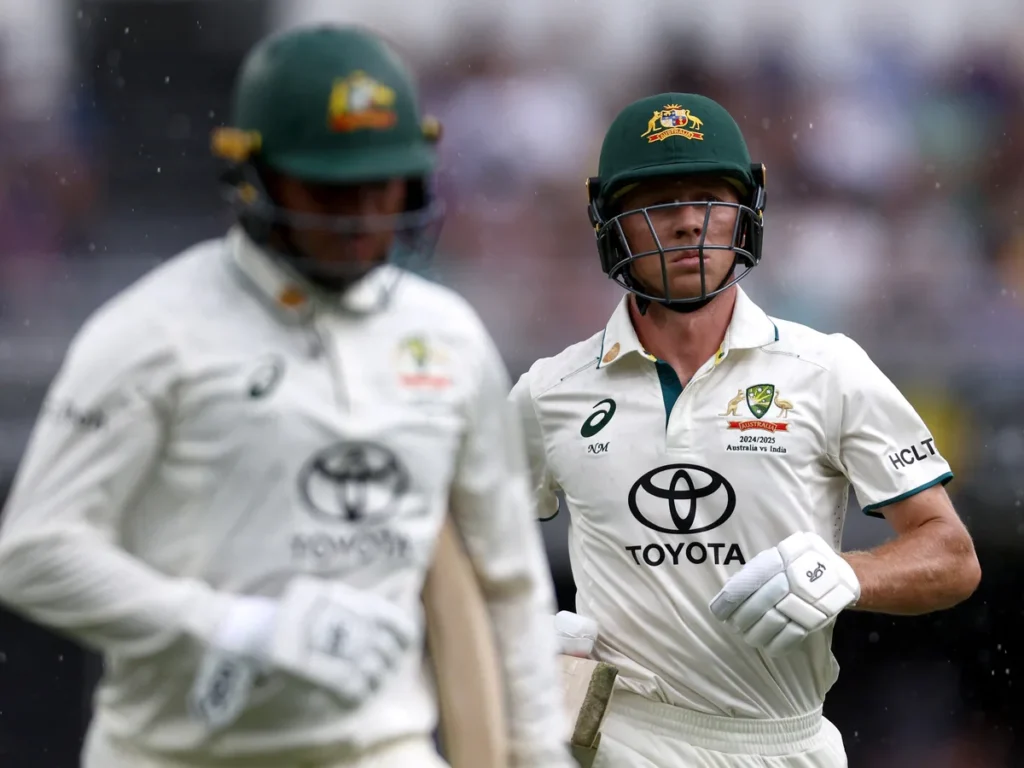Cricket is a sport that has a unique way of bringing people together, and the rivalry between the India National Cricket Team and the Australian Men’s Cricket Team is one of the most celebrated in the history of the game. Both teams have achieved remarkable success on the international stage, boasting some of the finest cricketers the world has ever seen. This article will break down a match scorecard between these two powerhouses and analyze the key moments that defined the game india national cricket team vs australian men’s cricket team match scorecard.
Introduction: A Rivalry for the Ages
India and Australia share a long and storied history of competitive cricket matches. From iconic Test series to thrilling One Day Internationals (ODIs) and high-octane Twenty20 (T20) clashes, their rivalry has consistently delivered some of the most unforgettable moments in the sport. Whether it’s the heat of a Test series or the fast-paced action of a limited-overs game, both teams have produced cricketing spectacles that are etched in fans’ memories india national cricket team vs australian men’s cricket team match scorecard.
This article will focus on a particular match between the India National Cricket Team and the Australian Men’s Cricket Team, offering an in-depth analysis of the scorecard, key performances, and moments that shaped the outcome india national cricket team vs australian men’s cricket team match scorecard.
Setting the Stage: The Build-Up to the Match
Before diving into the scorecard itself, it’s important to understand the context of the match. In cricket, a game’s significance goes beyond just the teams on the field. The build-up, the conditions, and the stakes all play an important role in shaping the match india national cricket team vs australian men’s cricket team match scorecard.
The India National Cricket Team and the Australian Men’s Cricket Team have been involved in some classic encounters, whether on Indian soil or in Australia. In this case, the match we’ll focus on took place in a prestigious tournament, adding to the already high expectations from both sets of fans india national cricket team vs australian men’s cricket team match scorecard.
The pitch conditions were expected to be a key factor in the outcome. Indian wickets, known for their spin-friendly nature, often favor India’s spinners. On the other hand, Australian wickets typically provide more bounce, aiding pace bowlers. The clash of these two different playing conditions created a fascinating dynamic for both teams, each strategizing based on their strengths india national cricket team vs australian men’s cricket team match scorecard.
The Key Players to Watch Out For
India’s Big Guns
India’s cricket team has consistently been home to some of the best players in the world. During this match, key players like Virat Kohli, Rohit Sharma, and Ravichandran Ashwin were expected to play crucial roles. Kohli’s aggressive batting, Sharma’s elegance, and Ashwin’s mastery of spin were all weapons India would need to navigate Australia’s challenge india national cricket team vs australian men’s cricket team match scorecard.
Australia’s Stars
Australia, on the other hand, has always been a force to reckon with. With players like Steve Smith, David Warner, and Mitchell Starc in the lineup, the Australian team was brimming with talent. Warner’s explosive opening, Smith’s solid technique, and Starc’s fast, attacking bowling were sure to pose significant threats to India’s game plan. india national cricket team vs australian men’s cricket team match scorecard
Toss and Team Composition
The Toss: A Crucial Moment
The toss is often seen as a game-changing moment in cricket, especially in matches where pitch conditions are a major factor. In this particular match, the Indian captain won the toss and elected to bowl first. This decision was influenced by the belief that the pitch would favor spinners in the latter stages of the game, and bowling first would allow India to chase a target under favorable conditions.
The Teams
India’s Starting XI:
- Rohit Sharma
- Shubman Gill
- Virat Kohli (C)
- Shreyas Iyer
- Rishabh Pant (WK)
- Hardik Pandya
- Ravindra Jadeja
- Ravichandran Ashwin
- Mohammad Shami
- Jasprit Bumrah
- Arshdeep Singh
Australia’s Starting XI:
- David Warner
- Travis Head
- Steven Smith (C)
- Marnus Labuschagne
- Glenn Maxwell
- Marcus Stoinis
- Alex Carey (WK)
- Mitchell Starc
- Josh Hazlewood
- Pat Cummins
- Ashton Agar
Both teams fielded a balanced lineup, with India focusing on spin bowling and Australia relying on their pace attack to provide the early breakthroughs.
Inning 1: Australia’s Batting Performance

The Australian Openers: David Warner and Travis Head
Australia’s innings began with David Warner and Travis Head at the crease. The duo’s aggressive style of batting was expected to challenge India’s opening bowlers. Warner, with his penchant for fast starts, immediately put pressure on the bowlers, while Head’s stability provided much-needed support.
India’s bowlers, led by Bumrah and Shami, started with discipline but struggled to find early breakthroughs. Warner took advantage of the early overs to find boundaries, while Head played a steady knock. The partnership was proving effective, and Australia’s score began to climb.
The Breakthrough: India Strikes
Just as the Australian openers seemed to be settling in, India’s pace attack managed to break the partnership. Arshdeep Singh delivered a crucial breakthrough, dismissing Head with a well-directed bouncer. This opened the floodgates for India, and they quickly capitalized on Australia’s middle-order weaknesses.
Australia’s Middle Order Struggles
After Head’s dismissal, the pressure was on the middle order to anchor Australia’s innings. However, India’s spinners, especially Ravindra Jadeja and Ravichandran Ashwin, caused significant problems for the batsmen. Marnus Labuschagne, despite his solid technique, was unable to handle the spin challenge, and he fell to Ashwin’s clever variation.
Steve Smith, Australia’s captain, tried to steady the ship, but the pressure of the situation got to him. Despite some solid defense, he was caught out by an excellent delivery from Jadeja, who was proving to be the difference-maker for India in the middle overs.
Australia’s Lower Order: A Fightback
With the top order back in the pavilion, Glenn Maxwell and Marcus Stoinis launched a brief counterattack, but they were quickly subdued by the spin twins, Ashwin and Jadeja. Mitchell Starc and Pat Cummins could not do much to salvage the innings, and Australia was eventually bowled out for 220 in 48.3 overs. This was a competitive total, but India had the advantage, given the favorable conditions for spin bowling.
Inning 2: India’s Chase
The Indian Openers: Rohit Sharma and Shubman Gill
India began their chase with Rohit Sharma and Shubman Gill at the crease. Sharma’s composed style of batting and Gill’s youthful aggression provided a good start. The Australian bowlers, particularly Mitchell Starc and Pat Cummins, started with pace and accuracy, but India’s openers handled the pressure well.
Early Breakthroughs: Australia on the Attack
As the match progressed, Australia’s bowlers continued to apply pressure. However, Rohit Sharma’s experience and composure allowed him to negotiate the fast bowling attack. Unfortunately, Gill was dismissed for 35, falling to the pace of Cummins.
Virat Kohli Steps Up
With the loss of Shubman Gill, Virat Kohli joined Rohit Sharma at the crease. The two Indian stalwarts put together a solid partnership, with Kohli showcasing his signature style of aggressive yet calculated batting. Sharma and Kohli were starting to look comfortable when disaster struck—Rohit was dismissed for 62 by Starc, with Australia’s bowlers finally getting the breakthrough.
The Middle Order: A Key Moment
With India at 140/3, the match was still in the balance. This is where the middle order, led by Shreyas Iyer and Rishabh Pant, had to step up. Iyer played a crucial knock, finding the boundary when needed and running quick singles to keep the scoreboard ticking. Pant, known for his explosive style, continued to accelerate India’s chase.
The Final Push: Pandya and Jadeja
With 40 runs needed off the last 6 overs, the tension was palpable. Hardik Pandya and Ravindra Jadeja, both known for their ability to finish games, stepped up to seal the deal. Pandya’s fearless batting put the Australians on the backfoot, and Jadeja’s calmness under pressure guided India to a thrilling win with 5 wickets in hand.
India chased down the target of 221 in 47.2 overs, with 5 wickets remaining, in what was a clinical display of batting and composure. Kohli top-scored with 78, while Sharma’s 62 provided the solid foundation for India’s successful chase.
Conclusion: India Prevails in a Thrilling Encounter
The match between the India National Cricket Team and the Australian Men’s Cricket Team was a spectacle that showcased the skills and resilience of both teams. India’s successful chase of 221 was a testament to their depth and versatility in both batting and bowling. The Australian team fought hard, but India’s spinners and calm chase ensured they came out on top.
Cricket is a game of moments, and this match had plenty of them. From Warner’s blistering start to Kohli’s composed finish, it was a contest that had everything—a thrilling contest, great sportsmanship, and, most importantly, a celebration of the beautiful game of cricket.
As the teams move forward in their respective journeys, this match will surely go down as another memorable chapter in the ever-growing rivalry between India and Australia.


